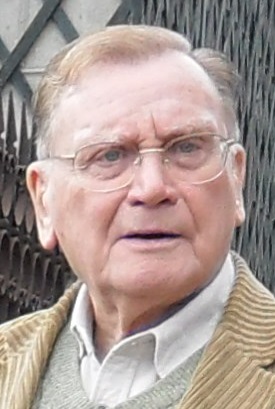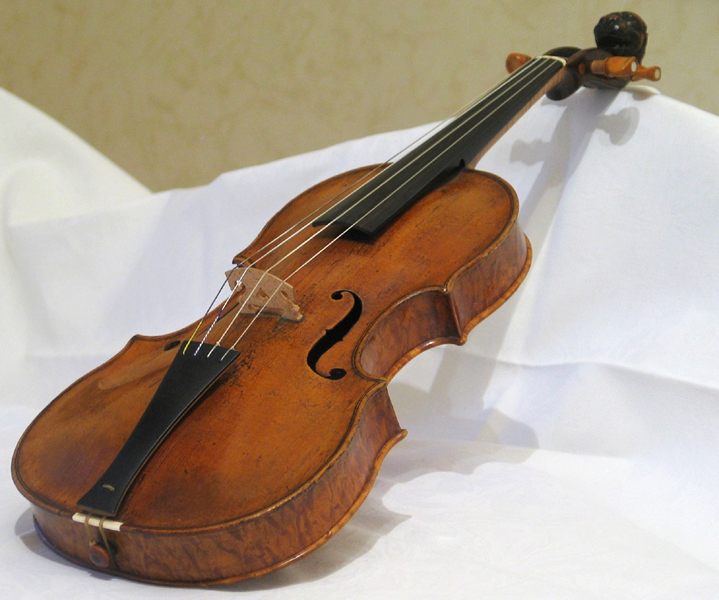|
Sonata For Violin And Cello (Ravel)
The Sonata for Violin and Cello (french: Sonate pour violon et violoncelle) is a composition written by Maurice Ravel from 1920 to 1922. He dedicated it to Claude Debussy, who had died in 1918. It premiered on 6 April 1922 with Hélène Jourdan-Morhange playing the violin and Maurice Maréchal the cello. It is in the key of A minor, with the fourth movement in the relative major key of C. It is M. 73 in the catalogue compiled by Marcel Marnat. Structure The work consists of four movements: References External links * * * * {{Authority control Compositions by Maurice Ravel 1922 compositions Ravel Ravel Joseph Maurice Ravel (7 March 1875 – 28 December 1937) was a French composer, pianist and conductor. He is often associated with Impressionism in music, Impressionism along with his elder contemporary Claude Debussy, although both composer ... Music with dedications ... [...More Info...] [...Related Items...] OR: [Wikipedia] [Google] [Baidu] |
Maurice Ravel
Joseph Maurice Ravel (7 March 1875 – 28 December 1937) was a French composer, pianist and conductor. He is often associated with Impressionism along with his elder contemporary Claude Debussy, although both composers rejected the term. In the 1920s and 1930s Ravel was internationally regarded as France's greatest living composer. Born to a music-loving family, Ravel attended France's premier music college, the Paris Conservatoire; he was not well regarded by its conservative establishment, whose biased treatment of him caused a scandal. After leaving the conservatoire, Ravel found his own way as a composer, developing a style of great clarity and incorporating elements of modernism, baroque, neoclassicism and, in his later works, jazz. He liked to experiment with musical form, as in his best-known work, ''Boléro'' (1928), in which repetition takes the place of development. Renowned for his abilities in orchestration, Ravel made some orchestral arrangements of other compose ... [...More Info...] [...Related Items...] OR: [Wikipedia] [Google] [Baidu] |
Claude Debussy
(Achille) Claude Debussy (; 22 August 1862 – 25 March 1918) was a French composer. He is sometimes seen as the first Impressionist composer, although he vigorously rejected the term. He was among the most influential composers of the late 19th and early 20th centuries. Born to a family of modest means and little cultural involvement, Debussy showed enough musical talent to be admitted at the age of ten to France's leading music college, the Conservatoire de Paris. He originally studied the piano, but found his vocation in innovative composition, despite the disapproval of the Conservatoire's conservative professors. He took many years to develop his mature style, and was nearly 40 when he achieved international fame in 1902 with the only opera he completed, '' Pelléas et Mélisande''. Debussy's orchestral works include ''Prélude à l'après-midi d'un faune'' (1894), ''Nocturnes'' (1897–1899) and ''Images'' (1905–1912). His music was to a considerable extent a r ... [...More Info...] [...Related Items...] OR: [Wikipedia] [Google] [Baidu] |
Hélène Jourdan-Morhange
Hélène Jourdan-Morhange (30 January 1888 – 15 May 1961) was a French classical violinist. Biography ''Née'' Hélène Morhange, she married the French painter Jacques Jean Raoul Jourdan (born 22 June 1880 in Paris), who died at the Battle of Verdun 25 March 1916. An interpreter inspired by the works of her contemporaries, she was noticed as early as 1917 by Maurice Ravel, of whom she became a friend and favourite interpreter. In 1927, Ravel dedicated to her his '' Violin Sonata No. 2'' and ensured the premiere of the '' Sonata for Violin and Cello'' in 1922. She was the companion of the painter and engraver , whom she presented to Ravel. With arthritis in her hands, she had to end her career early. Publications * ''Ravel et nous'', Éditions du Milieu du monde, Geneva, 1945, (Biography of Maurice Ravel, with a foreword by Colette and illustrated by Luc-Albert Moreau). * ''Ravel d'après Ravel'', Éditions du Cervin, Lausanne, 1953; a work reissued by Jean Roy, ''Ra ... [...More Info...] [...Related Items...] OR: [Wikipedia] [Google] [Baidu] |
Maurice Maréchal
Maurice Maréchal (3 October 1892 – 19 April 1964) was a French classical cellist. Maurice Maréchal was born in Dijon at the home of his parents, Jules Jacques Maréchal, an employee for Posts and Telegraphs, and Martha Justine Morier. After studying at the conservatory in his hometown, in 1905 he entered the Paris Conservatory where he studied with Jules-Leopold Loeb and won his first cello award in 1911 at the age of 19. World War I Three years later, France entered World War I, and Maréchal was drafted. He recorded his daily routine from August 1914 to February 1919 in his diaries, and recounted how two carpenter comrades carved him a rudimentary wooden cello from an ammunition box, with which he played for religious services and for officers. While in the service he met other musicians, including Gustave Cloëz, Lucien Durosoir, André Caplet and Henri Lemoine, and formed with them a small ensemble that performed before the officer staff. Maréchal was awarded the C ... [...More Info...] [...Related Items...] OR: [Wikipedia] [Google] [Baidu] |
Marcel Marnat
Marcel Marnat (born 6 July 1933) is a French musicologist, journalist and radio producer. Biography After a scientific training, he collaborated in the writing of various cultural newspapers and magazines (''Combat (newspaper), Combat'', ''Jazz Hot'', ''Arts (revue), Arts'', ''Les Lettres Françaises'', ''L'Express'', ''Preuves'', ''Le Monde'', ''Disques'', ''Harmonie'', ''Le Monde de la musique'', ''Nouvelle Revue Française''). He writes on current affairs, art, cinema, literature and lists new discographic publications. He was also secretary of the Ravel Foundation and compiled a catalogue of works by Maurice Ravel. Marcel Marnat was responsible for programming at France Musique from 1978 to 1992 and has been working since 1990 with the Radio Suisse Romande-Espace 2. He was awarded the prize for music criticism. His book on Giacomo Puccini was honoured by the Académie des Beaux-Arts and received the prix Pelléas as well as a prize for musical biography of the Société de ... [...More Info...] [...Related Items...] OR: [Wikipedia] [Google] [Baidu] |
Texas Tech University
Texas Tech University (Texas Tech, Tech, or TTU) is a public research university in Lubbock, Texas. Established on , and called Texas Technological College until 1969, it is the main institution of the five-institution Texas Tech University System. The university's student enrollment is the sixth-largest in Texas as of the Fall 2020 semester. As of fall 2020, there were 40,322 students (33,269 undergraduate and 7,053 graduate) enrolled at Texas Tech. With over 25% of its undergraduate student population identifying as Hispanic, Texas Tech University is a designated Hispanic-serving institution (HSI). The university offers degrees in more than 150 courses of study through 13 colleges and hosts 60 research centers and institutes. Texas Tech University has awarded over 200,000 degrees since 1927, including over 40,000 graduate and professional degrees. Texas Tech is classified among "R1: Doctoral Universities – Very high research activity." Research projects in the areas o ... [...More Info...] [...Related Items...] OR: [Wikipedia] [Google] [Baidu] |
Compositions By Maurice Ravel
Composition or Compositions may refer to: Arts and literature *Composition (dance), practice and teaching of choreography *Composition (language), in literature and rhetoric, producing a work in spoken tradition and written discourse, to include visuals and digital space *Composition (music), an original piece of music and its creation *Composition (visual arts), the plan, placement or arrangement of the elements of art in a work * ''Composition'' (Peeters), a 1921 painting by Jozef Peeters *Composition studies, the professional field of writing instruction * ''Compositions'' (album), an album by Anita Baker *Digital compositing, the practice of digitally piecing together a video Computer science *Function composition (computer science), an act or mechanism to combine simple functions to build more complicated ones *Object composition, combining simpler data types into more complex data types, or function calls into calling functions History *Composition of 1867, Austro-Hungarian/ ... [...More Info...] [...Related Items...] OR: [Wikipedia] [Google] [Baidu] |
1922 Compositions
Nineteen or 19 may refer to: * 19 (number), the natural number following 18 and preceding 20 * one of the years 19 BC, AD 19, 1919, 2019 Films * ''19'' (film), a 2001 Japanese film * ''Nineteen'' (film), a 1987 science fiction film Music * 19 (band), a Japanese pop music duo Albums * ''19'' (Adele album), 2008 * ''19'', a 2003 album by Alsou * ''19'', a 2006 album by Evan Yo * ''19'', a 2018 album by MHD * ''19'', one half of the double album ''63/19'' by Kool A.D. * ''Number Nineteen'', a 1971 album by American jazz pianist Mal Waldron * ''XIX'' (EP), a 2019 EP by 1the9 Songs * "19" (song), a 1985 song by British musician Paul Hardcastle. * "Nineteen", a song by Bad4Good from the 1992 album '' Refugee'' * "Nineteen", a song by Karma to Burn from the 2001 album ''Almost Heathen''. * "Nineteen" (song), a 2007 song by American singer Billy Ray Cyrus. * "Nineteen", a song by Tegan and Sara from the 2007 album '' The Con''. * "XIX" (song), a 2014 song by Slipknot. ... [...More Info...] [...Related Items...] OR: [Wikipedia] [Google] [Baidu] |
Violin Sonatas
A violin sonata is a musical composition for violin, often accompanied by a keyboard instrument and in earlier periods with a bass instrument doubling the keyboard bass line. The violin sonata developed from a simple baroque form with no fixed format to a standardised and complex classical form. Since the romantic age some composers have pushed the boundaries of both the classical format as well as the use of the instruments. The early violin sonata In the earliest violin sonatas a bass instrument and the harpsichord played a simple bass line (continuo) with the harpsichord doubling the bass line and fixed chords while the violin played independently. The music was contrapuntal with no fixed format. Georg Philipp Telemann wrote many such sonatas as did Johann Sebastian Bach. Bach also wrote sonatas with harpsichord obbligato, which freed the keyboard instrument from playing only a bass line accompaniment and allowed in to enhance the part of the soloist. He also wrote sonatas for ... [...More Info...] [...Related Items...] OR: [Wikipedia] [Google] [Baidu] |
Cello Sonatas
A cello sonata is usually a sonata written for solo cello with piano accompaniment. The most famous Romantic-era cello sonatas are those written by Johannes Brahms and Ludwig van Beethoven. Some of the earliest cello sonatas were written in the 18th century by Francesco Geminiani and Antonio Vivaldi. The following list contains cello sonatas with or without accompanying instruments. See the See also list for more comprehensive lists divided up into solo and accompanied works. List of major cello sonatas * Charles-Valentin Alkan ** Sonate de Concert, Op. 47 (c. 1857) * Samuel Barber ** Cello Sonata in C minor, Op. 6 (1932) *Arnold Bax **Cello Sonata (1923) **Cello Sonatina (1933) **Legend-Sonata (1943) *Ludwig van Beethoven ** Cello Sonata No. 1 in F major, Op. 5/1 (1796) ** Cello Sonata No. 2 in G minor, Op. 5/2 (1796) ** Cello Sonata No. 3 in A major, Op. 69 (1808) ** Cello Sonata No. 4 in C major, Op. 102/1 (1815) ** Cello Sonata No. 5 in D major, Op. 102/2 (1815) * Easle ... [...More Info...] [...Related Items...] OR: [Wikipedia] [Google] [Baidu] |




